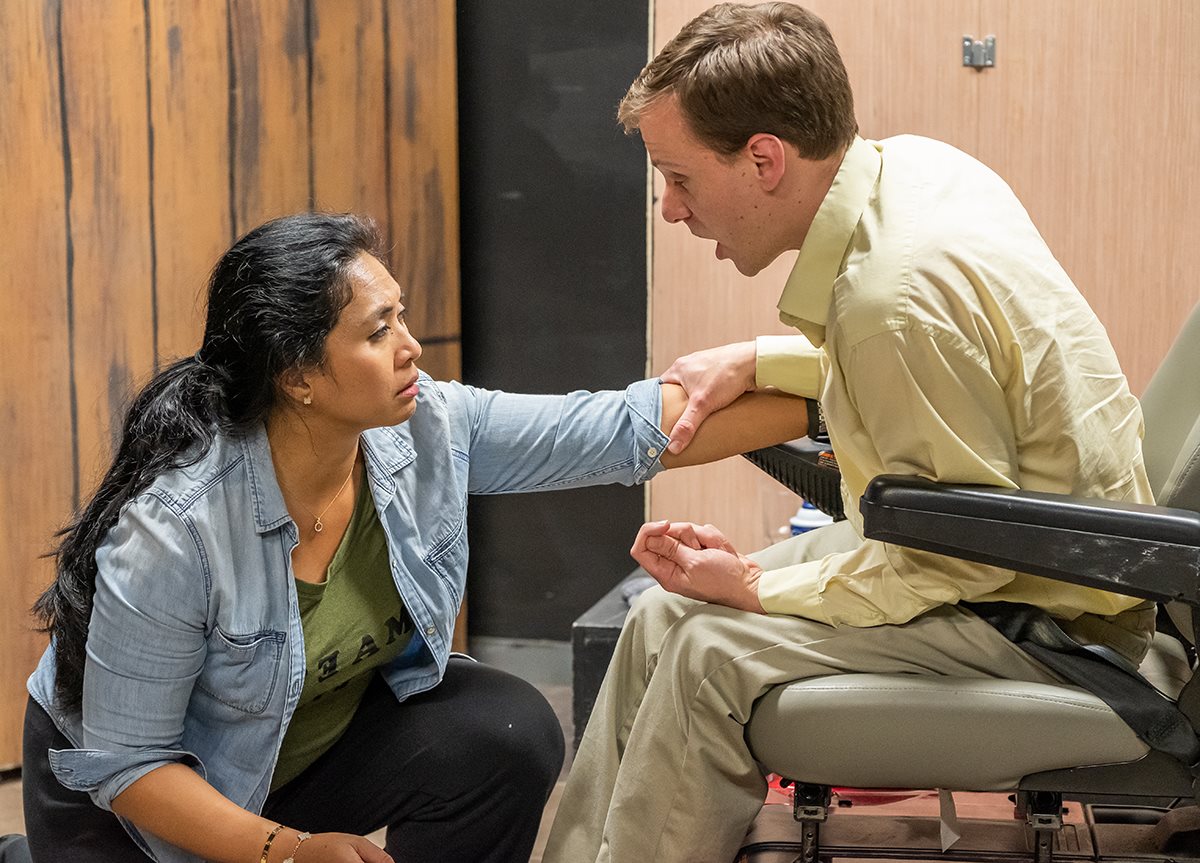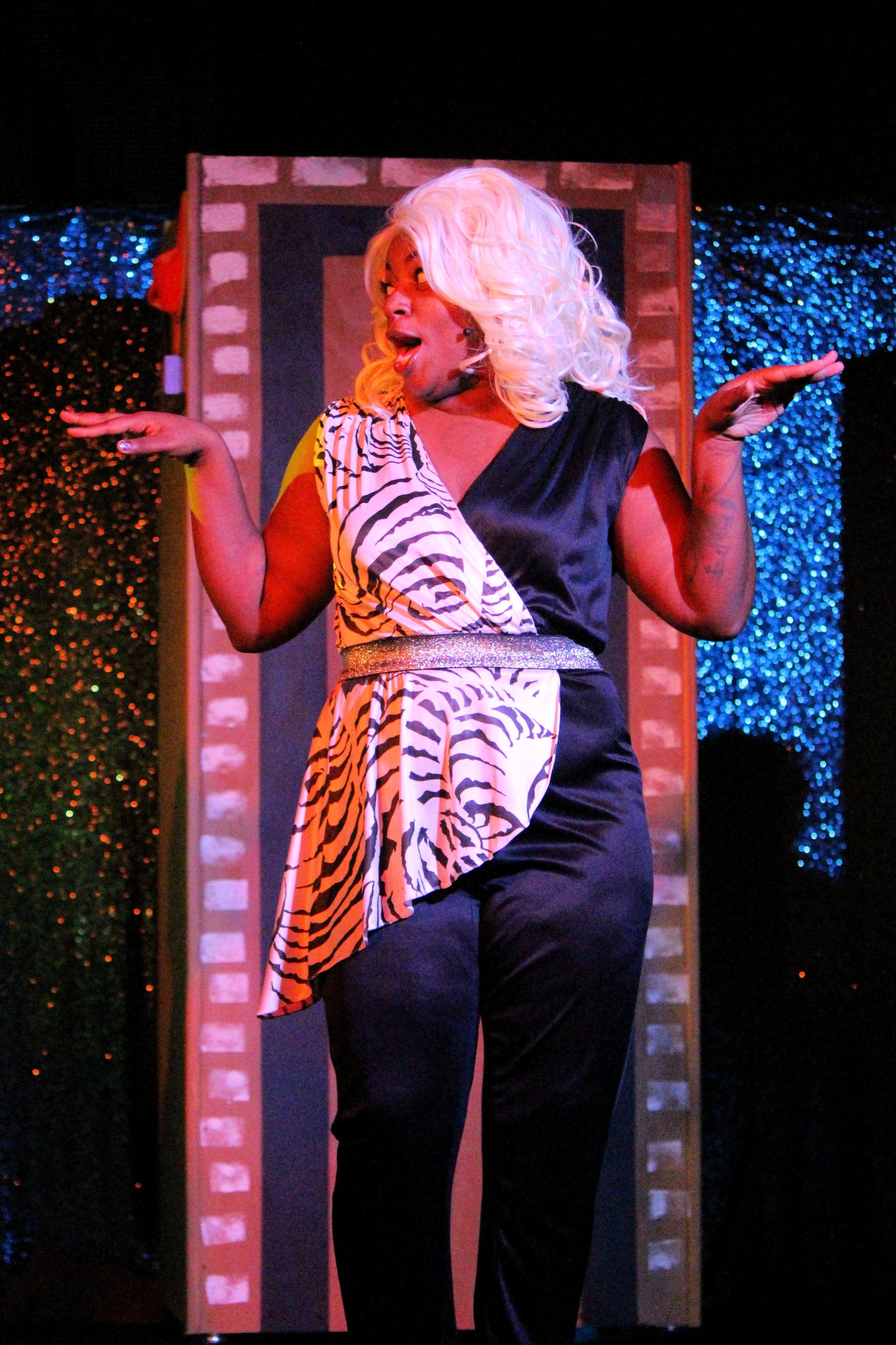by Frank Thompson
(As always, I open with the disclaimer that I am a frequent director and a member of the Board of Trustees for Workshop Theatre.)
The Fierce & Fabulous Cabaret, running through Sunday at Workshop’s new home at Cottingham Theatre on the Columbia College campus, bills itself as “celebrating the women of Broadway,” and there’s certainly no shortage of celebrated talent onstage. Featuring several well-established Midlands-area chanteuses alongside a few new faces/voices, last Saturday evening’s performance brought the audience to its feet more than once with multiple show-stopping bravura turns by some of the best female vocalists in town. The acoustics at Cottingham are nice and hot, and while live mics are utilized, I doubt if even half the cast needs any amplification. These ladies know how to project and sell a song, and if you’re looking for a showcase of outstanding music plucked from Broadway hits from the 1950s to today, you’ll find it at The Fierce & Fabulous Cabaret.
Following a full-cast rendition of “I’m A Woman” from Smokey Joe’s Café, Regina Skeeter sets the bar high with “Home,” one of the lesser-known but most vocally powerful ballads in The Wiz. (This was my first time seeing Skeeter perform, and she delivers strength as well as a sense of dreamy wonderment to her turn in the spotlight.) Columbia legend Valdina Hall absolutely soars with Sondheim’s “Send In The Clowns,” and Robin Gottlieb’s signature number, Cabaret, quite literally had the crowd shouting for an encore. The second act rocks open with Katrina Blanding delivering Dreamgirls’ “And I’m Telling You I’m Not Going” with her usual powerhouse voice and innate storyteller’s gift for conveying a song’s emotional foundation. On Jason Robert Brown’s “I Can Do Better Than That,” Emily Northrop engages the audience from intro to post-applause, demonstrating not only impressive vocals but also an understanding of true cabaret technique, and Mandy Applegate Bloom’s “She Used To Be Mine” from Waitress brings down the house in classic eleven-o’clock-number style.
The rest of the cast offers solid work across the board, and there truly isn’t a weak link, though those mentioned above are particular standouts. While watching the performance, I began to realize that I was missing the sense of an overall emotional arc, framing piece, or central theme to segue the audience from each number to the next. Some of the performers simply took the mic and started singing, others utilized a few lines of dialogue, and a few (see above) took a moment to connect with the audience. If this sounds nit-picky, it’s because The Fierce And Fabulous Cabaret is of such high quality, I truly hope it comes together as a more thematically cohesive piece. Who are these women? Are they the actual people we see onstage? If so, great! I would suggest having each song tied to the singer's life experience, allowing a glimpse of the real-life woman known to many only as her onstage personae. (Gottlieb and Northrop are particularly skilled at bonding with the audience, as is Emily Clelland, who relates a personal experience that motivated her as a performer, followed by an enthusiastic song-and-dance rendition of “If They Could See Me Now” from Sweet Charity.) A few of the pieces, while quite splendidly performed, seemed randomly inserted. Kathy Seppamaki’s “Christmas Lullaby” (Songs For A New World) is one of the best-sung ballads in a show full of A-list talent, but feels somewhat out of place between two comedic bits, and without context . Lou Boeschen’s “On The Steps Of The Palace” (Into The Woods) is lovely, and dovetails nicely into Rodgers and Hammerstein’s “Stepsisters Lament,” yet nothing is said about the Cinderella myth. This would have been a perfect opportunity to comment on any number of themes relevant to modern womanhood. Once I realized that I was seeing a sort of hybrid concert/cabaret, I just sat back and enjoyed the music, all the while thinking how interesting it is to watch the artistic process unfold. With a stronger sense of identity and a commitment to one specific reality/style, The Fierce And Fabulous Cabaret could easily tour as a professional show. The talent is there, the music is solid and representative of classic and contemporary Broadway, and the basic structure is in place. All it needs is a more defined sense of identity and an answer for “why is each song in its particular spot?”
The set is simple and sleek, designed by Patrick Faulds to provide tiered seating for the cast, who stay onstage the entire show. As usual, Dean McCaughan’s steady hand keeps sound well-balanced and smooth, though I was disappointed to see that the production utilizes pre-recorded music tracks instead of live accompaniment. For future gigs, I would suggest a single pianist who could also serve as a narrative voice, presenter, and general point of connection between the singers and their audience.
The Fierce And Fabulous Cabaret is well worth your time and money exactly “as is,” and I strongly recommend you see it now. With a little scripting revision and specific motivation behind each number, it could have a significant future, and you’ll want to catch this act from the very start of its evolution.
There are only three performances left, Friday and Saturday at 8pm, and Sunday at 3pm. Tickets can be purchased by calling (803) 799.6551 or visiting Workshoptheatre.com
-FLT3































